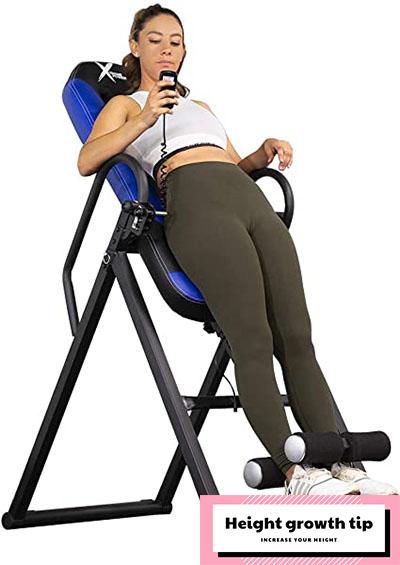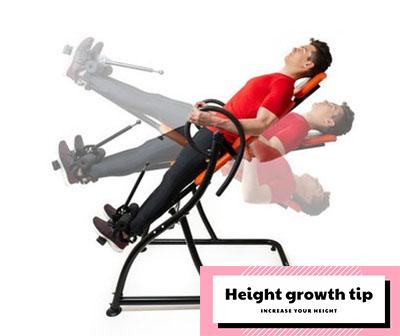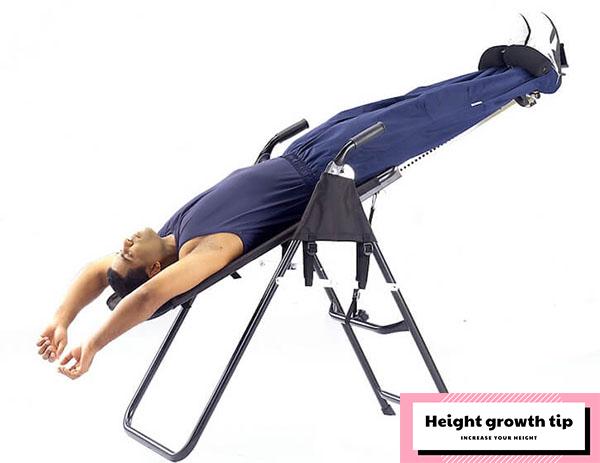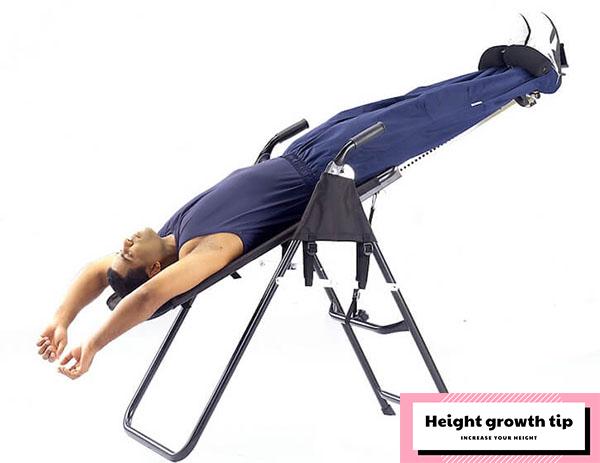In the quest to find relief from persistent back pain and the desire to add a few extra inches to one’s height, an increasing number of individuals are turning to an unconventional method known as inversion tables. These unique contraptions, designed to turn the world upside down, have piqued curiosity and ignited spirited discussions among those seeking alternative solutions for their physical ailments. While the idea of hanging upside down may not be everyone’s first choice, for those eager to increase their height, the alluring possibility of potential results cannot be denied.
So, can inversion tables truly unlock the secret to fulfilling the age-old dream of becoming taller? The answer to this intriguing question lies ahead, waiting to be explored as we delve deeper into the fascinating world of inversion therapy. Join us on this journey as we uncover the truth about whether these upside-down devices can indeed help you stand a little taller.
Is it Possible for Inversion Tables to Actually Boost Your Height?
Inversion tables have shown promising potential in contributing to height augmentation. This method utilizes gravity to relieve spinal pressure, though it requires patience for noticeable results to manifest.
When compared to other methods for height enhancement, such as height-boosting medications, maintaining a balanced diet, or even considering surgical procedures, the use of an inversion table emerges as a potentially simpler and less invasive alternative. However, it’s crucial to choose the correct inversion angle and consistently incorporate this method into your routine.
Initially designed to address back pain issues, inversion tables have garnered the interest of medical professionals due to their potential to stimulate height growth. To achieve optimal results, it’s recommended to use this table daily, ideally twice a day.
While traditional stretching exercises may seem like a straightforward approach, their impact on height may be limited by the constraints of gravity. Therefore, for improved flexibility and the potential for height gain, integrating inversion tables into your regular exercise routine is essential.

How Much Height Can You Gain Using an Inversion Table?
Increasing one’s height can be quite challenging, but with a well-structured exercise routine that incorporates the use of an inversion table, it is possible to aim for a notable increase in stature, typically ranging from 2 to 3 inches.
The mechanism underlying the effectiveness of inversion tables involves several factors, including the separation of vertebrae, spinal decompression, and simultaneous muscle elongation. While partial inversions, where the angle is less than 90 degrees, contribute to decompression, it is the full inversions that provide the maximum stretch and offer the most favorable conditions for height enhancement.
When compared to alternative methods, the height augmentation achieved through the use of inversion tables emerges as a remarkable and effective solution, ultimately boosting self-confidence.
Understanding the Science of Inversion Therapy
If you’re curious about the scientific basis for the impressive height gains facilitated by inversion tables, rest assured that this approach is both safe and effective.
In fact, inversion tables set at angles of up to 60 degrees induce height increase by applying traction to the back muscles, leading to spinal decompression. This can also offer swift relief for individuals dealing with back pain.
Furthermore, engaging in a full inversion creates an ideal stretch, widens the gap between vertebrae, and results in substantial muscle elongation, ultimately leading to significant height augmentation.

Optimizing Height Growth with an Inversion Table:
Step 1: Adjusting Your Inversion Table’s Height Settings
To maximize the benefits of your inversion table for height growth, start by customizing its height settings. Locate the pins on the frame’s side, designed to securely fix the leg assembly at your desired height. Insert the pin into the corresponding hole to ensure a stable position. Precise adjustment is essential to prevent any potential slippage during your inversion routine. While the adjustment mechanisms may vary between models, these general steps are applicable to most inversion tables.
Step 2: Ensuring Proper Body Position
Achieving the correct body positioning on the inversion table involves reclining on the cushion and sliding your feet through the leg assembly rollers. Adjust the rollers to minimize the gap between them and securely lock them with the pin. It’s crucial for your back and ankles to be snugly secured, finding the right balance between firmness and comfort.
Step 3: Initiating the Inversion
Begin the inversion process by gradually rotating your body on the table to build momentum. Raise your arms to create a modest 20-30 degree angle with your body. Maintain this position for a few minutes, slowly lowering your arms to return the table to its original orientation. As you do this, remember to inhale while raising your arms and exhale as you lower them.
Step 4: Gradually Increase the Inversion Angle
When you feel ready, briefly dismount from the table to adjust the angle to 60 degrees. Re-enter the table and, while turning your body, start lifting your arms to achieve a 60-degree inversion. Maintain this position for several minutes, following the same breathing pattern as described in step 3.
Step 5: Employ the Oscillation Technique
The oscillation technique involves transitioning between an upright position and an inverted one. Begin by securing your ankles in the ankle braces and lying down on the table. Gradually raise your right hand, followed by your left, until you reach a 60-degree inversion. Slowly lower your right hand and then your left to return the table to a horizontal position.
For beginners, start with 30-second intervals and gradually extend the duration every few days. Experienced users can spend up to 5 minutes or more on the table.
Step 6: Rotate 90 Degrees
Rotate the inversion table 90 degrees to assume a perpendicular position to the floor and maintain this posture for a few minutes. During this phase, gently stretch your back and ensure your shoulders are pushed back.
Always refer to the user manual accompanying your specific inversion table for comprehensive instructions and safety guidelines.

What additional benefits can you expect from using an inversion table?
Aside from its potential to increase height, an inversion table offers several other notable advantages:
- Back Pain Relief: Inversion tables provide a natural and passive method to address back pain. By using your body weight and gravity, these tables stretch the spine, effectively relieving back pain through decompression.
- Core Strength: A strong core, including abdominal muscles, lower back muscles, and internal and external obliques, is essential for proper body support. Incorporating exercises like sit-ups or crunches on an inversion table can significantly improve core muscles, leading to better posture, increased flexibility, and enhanced blood circulation.
- Spinal Health Promotion: Spending a few minutes on an inversion table after a workout can elongate the body, relax muscles, and release spinal tension. This practice can reduce post-workout soreness and contribute to overall spinal health.
- Stress Reduction: Users of inversion tables have reported experiencing stress relief. Using an inversion table triggers the release of endorphins in the brain, helping to reduce stress, anxiety, and depression. Additionally, it may boost motivation and energy levels, promoting an overall sense of well-being.
These supplementary benefits make inversion tables a versatile and valuable tool for improving both physical and mental well-being.
In conclusion,
In this comprehensive assessment, our primary aim is to provide you with a thorough understanding of the incredible potential offered by inversion tables for height enhancement. By incorporating these devices into your daily routine, you have the opportunity to achieve a significant increase in stature, possibly gaining 2 to 3 inches in height. However, it’s crucial to exercise caution and avoid pushing your physical limits. If you experience dizziness or fatigue during inversion therapy, it’s essential to return to an upright position gradually. Remember that rushing through this journey is not advisable. With patience and a commitment to consistent effort, you can work diligently towards realizing your height aspirations.

